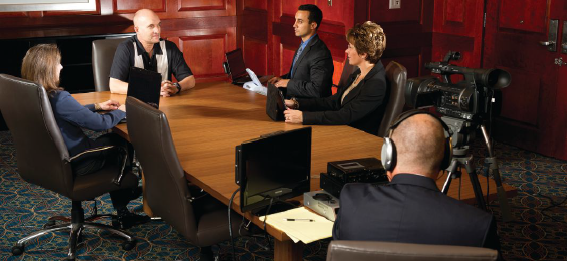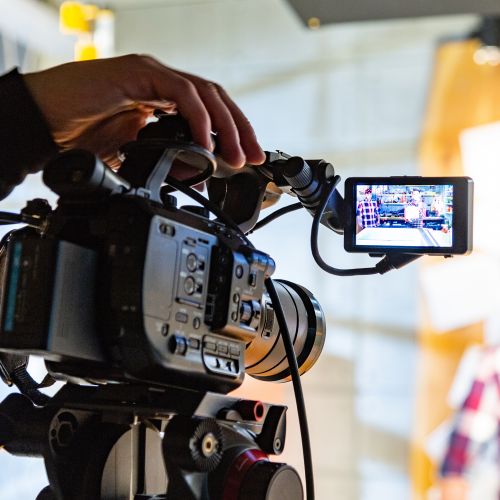Why Lawful Videography Is Crucial for Accurate Legal Record-Keeping
In the realm of lawful procedures, the accuracy of record-keeping is critical, and legal videography arises as a vital tool in this context. As we discover the multifaceted benefits of legal videography, one must consider its effects for the future of judicial honesty and transparency.
Importance of Visual Evidence
Establishing the significance of aesthetic proof in legal process is extremely important for making certain precise record-keeping and improving the general honesty of the judicial procedure. Aesthetic proof functions as an essential tool in recording occasions, problems, and other pertinent details that may be vital to an instance. Unlike created accounts, which are vulnerable to interpretation and bias, visual recordings offer a purpose, unalterable depiction of facts as they happened.
This type of evidence can record a variety of components, consisting of witness behavior, environmental context, and physical evidence, every one of which might influence judicial outcomes. By offering a clear and detailed visual narrative, lawful videography eliminates obscurity and helps to maintain the authenticity of the proof.
Additionally, visual evidence can be crucial in minimizing disagreements over factual disparities, as it permits a straight comparison against testament and various other recorded records. In an age where electronic innovation is increasingly prevalent, the capacity to present visual proof successfully can dramatically enhance the total top quality of legal proceedings. Eventually, the incorporation of visual proof not only strengthens the paperwork process however likewise enhances public depend on in the judicial system by advertising openness and liability.
Enhancing Statement Trustworthiness
The integration of legal videography right into courtroom process substantially enhances the integrity of witness testament. By catching the nuances of spoken and non-verbal interaction, video recordings offer an even more extensive depiction of a witness's disposition, emotions, and reliability. This visual documents allows jurors to observe the witness's body language, faces, and general behavior, which are critical elements that can affect their understanding of testimony reputation.

Furthermore, the presence of video footage can deter witnesses from offering deceptive or overstated declarations, as they are aware that their testament is being taped. This accountability reinforces the honesty of the judicial process. Inevitably, lawful videography serves as a vital device in making certain that witness testimony is not only properly depicted yet also viewed with increased reputation by all events included.
Comprehensive Document Preservation
Comprehensive document conservation is necessary for maintaining the integrity of lawful process. Lawful videography acts as an essential tool in this procedure, giving an exact visual and acoustic account of statements, depositions, and other zero hours in a case. Unlike conventional written records, video recordings record the nuances of body language, tone, and emotion, which are essential for comprehending the context and intent behind statements made throughout lawful procedures.
Incorporating audiovisual components right into record-keeping boosts the conservation of proof, guaranteeing that it remains intact and easily accessible throughout the legal procedure. This is especially crucial in situations where the dependability of witness statements might be challenged, as aesthetic recordings can corroborate cases and give clarity. Additionally, video documents moved here can be invaluable throughout appeals or retrials, using an unaltered depiction of the initial testament.

Furthermore, the capability to review video proof permits lawyers to recognize crucial information that might have been forgotten in created records. By preserving a thorough archive of lawful process through videography, law practice can maintain the highest standards of precision and responsibility, ultimately adding to a fairer judicial procedure.
Improving Lawful Process
Simplifying lawful process is necessary for enhancing performance and lowering hold-ups within the judicial system. Legal videography acts as a pivotal tool in attaining this objective by offering clear and exact visual paperwork of court hearings, depositions, and testimonies - legal videography. This modern technology enables real-time recording, guaranteeing that all spoken and non-verbal cues are caught, which can facilitate quicker resolution of disputes
The combination of videography right into legal procedures decreases dependence on conventional techniques, such as prolonged transcripts, which can be lengthy to produce and evaluate. By having actually accessibility to videotaped footage, lawyers can promptly reference vital minutes, boosting their capability to prepare and existing instances effectively. This immediacy likewise helps in the making clear of testaments, reducing the potential for misconception.

Admissibility in Court
Exact paperwork is vital not only for performance yet likewise for ensuring that proof is admissible in court. Lawful videography functions as an important device in this process, supplying a dependable aesthetic record of testimonies, declarations, and occasions. Courts commonly require evidence to meet certain standards of admissibility, including significance, credibility, and integrity. High-quality video clip recordings can fulfill these standards by recording clear audio and visual information that composed transcripts may neglect.
To be deemed admissible, lawful videography must comply with established protocols, such as correct equipment usage, proper lighting, and clear audio capture. Additionally, Web Site it is essential to have actually certified videographers that recognize the legal requirements surrounding proof collection. legal videography. The chain of guardianship have to additionally be preserved to protect against any kind of claims of tampering or change
Additionally, lawful videography can improve the persuasiveness of proof by giving jurors with a straight view of the testament, enabling a much more engaged understanding of the case. In summary, the assimilation of lawful videography into record-keeping not only sustains performance however likewise bolsters the honesty and admissibility of evidence in court proceedings.
Conclusion
In verdict, legal videography plays a pivotal duty in guaranteeing accurate lawful record-keeping by offering objective visual paperwork. Inevitably, the unification of lawful videography into the judicial procedure promotes openness and strengthens public trust fund in the honesty of the lawful system.